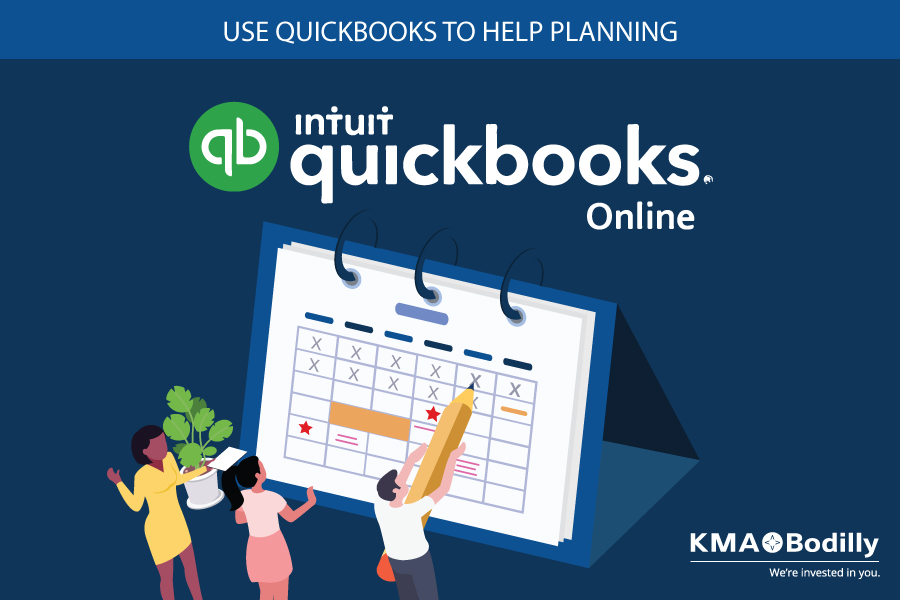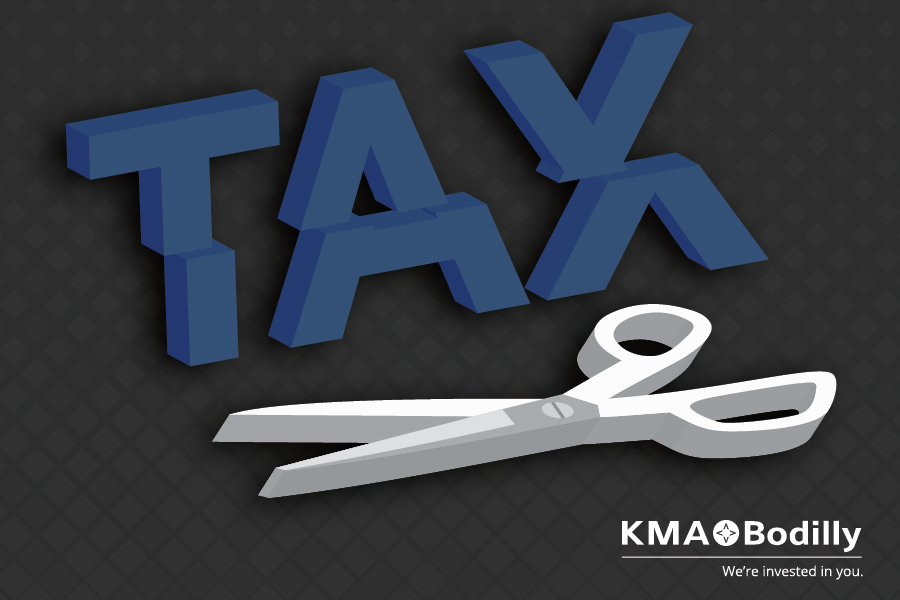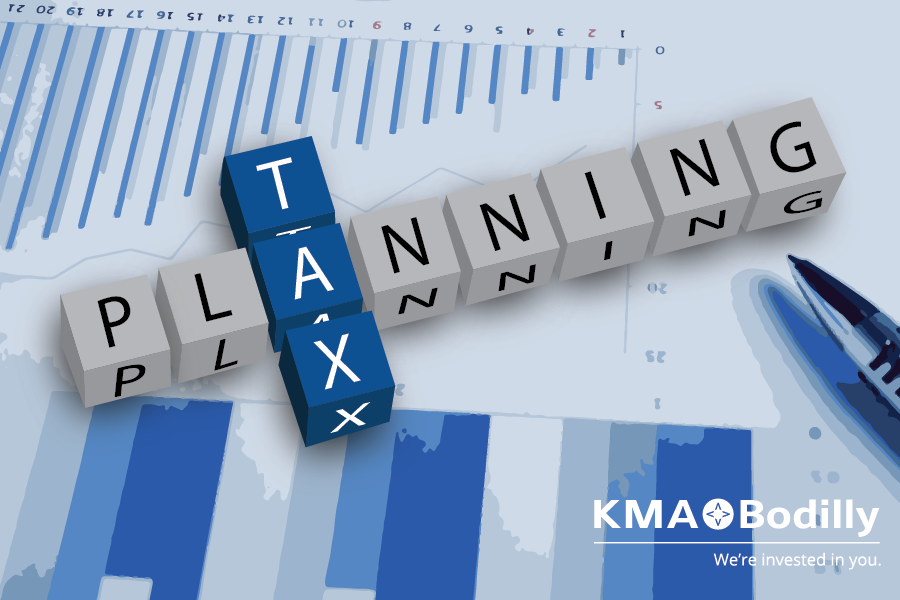On Friday, December 15, a joint conference committee comprised of House and Senate members released an agreed-upon version of the Tax Cuts and Jobs Act (the “Act”). The Act provides the most comprehensive update to the tax code since 1986 and includes a number of provisions of particular interest to our private clients.
The Act now goes before the full House and Senate for a vote the week of December 18, 2017, but is widely expected to pass as a result of some last-minute negotiations to secure a projected unanimous GOP vote in the Senate.
As was previously proposed in the earlier Senate bill, individual tax reform is temporary. Unless noted, the provisions discussed below would go into effect on January 1, 2018, and expire on December 31, 2025.
Ordinary Income Tax Rates
The conference agreement replaces the existing tax rate structure, choosing the seven-rate structure previously proposed by the Senate. However, the agreement changed the Senate’s breakpoints for the higher marginal rates and lowered the top marginal tax rate to 37 percent. Further, the agreement does not adopt the House’s proposal to phase out the 12-percent bracket for high income taxpayers.
Long-term Capital Gains and Qualified Dividends
Long-term capital gains and qualified dividends tax rates remain largely unchanged from present law and apply the following rates based on the taxpayer’s taxable income:
Tax Rate Married Filing Jointly and Surviving Spouses Single Head of Household Married Filing Separately Estates & Trusts
0% $0 – $77,200 $0 – $38,600 $0 – $51,700 $0 – $38,600 $0 – $2,600
15% $77,200 – $479,000 $38,600 – $425,800 $51,700 – $452,400 $38,600 – $239,500 $2,600 – $12,700
20% Over $479,000 Over $425,800 Over $452,400 Over $239,500 Over $12,700
Kiddie Tax
The conference agreement calls for a child’s earned income to be taxed at the rates applied to single filers and a child’s net unearned income to generally be taxed at ordinary income and preferential (i.e. capital gains) rates applied to estates and trusts. Accordingly, a child’s income would no longer be taxed at the parents’ rate.
Inflation Adjustments
The breakpoints for the ordinary income, long-term capital gains, and qualified dividends tax brackets would be adjusted in future years for inflation. However, inflation would be measured using the Chained Consumer Price Index (C-CPI), which generally provides a slower inflationary adjustment than the current Consumer Price Index (CPI) measurement. This measurement of inflation is applied for all individual tax inflation adjustments permitted in the Act and would be permanent, not expiring in 2025 with the other individual provisions.
Standard Deduction and Personal Exemptions
The conference agreement increases the standard deduction beginning in 2018 to $24,000 for joint filers, $18,000 head-of-household filers, and $12,000 for all other individual filers. The deduction would be indexed for inflation in future years. The additional standard deduction for the elderly and the blind was retained; the House had previously proposed to repeal the additional deduction.
Further, the conference agreement suspends the deduction for personal exemptions through 2025. The conference agreement, however, retains the $100 and $300 exemptions for complex and simple trusts, respectively, and a $4,150 exemption for qualified disability trusts which is to be adjusted for inflation in future years. The House had previously proposed to repeal the exemption for qualified disability trusts.
Child Tax Credit
The Child Tax Credit would be increased to $2,000 per qualifying child, with up to $1,400 being fully refundable. A qualifying child is a dependent child who is under age 17. The Credit would begin to phase out for joint filers with adjusted gross income exceeding $400,000 and other filers with adjusted gross income exceeding $200,000.
An additional $500 non-refundable credit may be available for other dependents, provided however, that such additional credit is only available to non-citizen dependents if they are a resident of the United States.
Currently, the Child Tax Credit is $1,000 per qualifying child and is nonrefundable. The Child Tax Credit currently phases out for joint filers with adjusted gross income exceeding $110,000.
Adjustments to Income (“Above-the-Line” Deductions)
Moving Expenses
The conference agreement suspends through 2025, the deduction for moving expenses except in the case of a member of the U.S. military who moves pursuant to a military order. Currently, individuals may take an above-the-line deduction for certain unreimbursed moving expenses incurred by reason of relocating for work.
Alimony
For any divorce or separation agreements entered into after December 31, 2018, the deduction for alimony or separate maintenance payments is repealed. Recipients of alimony or separate maintenance payments will no longer be required to include the alimony payments in their gross income. Under the new provisions, alimony or separate maintenance payments will be treated similar to child support, in that they are not accounted for in the tax system (no deduction and no inclusion). Existing alimony and separate maintenance agreements are grandfathered in as are any modifications to existing agreements unless, however, the parties to a modification expressly provide that the new rules should apply to the modified agreement.
Prenuptial agreements are not grandfathered in and taxpayers may wish to revisit those agreements in light of these new provisions.
Itemized Deductions
Medical Expense
The medical expense deduction threshold would be temporarily lowered to permit a deduction against both the regular tax and alternative minimum tax (AMT) for medical expenses in excess of 7.5-percent of adjusted gross income for all taxpayers itemizing deductions in 2017 and 2018. Currently, the 7.5-percent adjusted gross income threshold is only available for taxpayers over age 65 (younger taxpayers have a 10-percent adjusted gross income threshold) and all taxpayers have a 10-percent of adjusted gross income threshold for AMT purposes.
Taxes
The sum of the itemized deductions for state and local real property taxes, state and local personal property taxes, and state and local income or sales taxes may not exceed $10,000 ($5,000 for married individuals filing separate returns). The deduction for foreign real property taxes is suspended through 2025. The $10,000 limitation does not apply to foreign income taxes paid or taxes paid or accrued in carrying on a trade or business.
Further, the agreement provides an anti-abuse provision to prevent a deduction in 2017 on the prepayment of state and local income taxes attributable to future years.
Home Mortgage Interest
The itemized deduction for mortgage interest has been reduced to only permit the deduction of interest on acquisition indebtedness not exceeding $750,000 ($375,000 for married filing separate taxpayers) on the taxpayer’s primary or second home. The interest deduction for home equity indebtedness is suspended.
Currently, taxpayers can take a combined acquisition and home equity indebtedness interest expense deduction on $1,100,000 of debt. Debt incurred on or before December 15, 2017, is grandfathered in and subject to the current limitations. Further, taxpayers who entered into a written binding contract before December 15, 2017, to close on the purchase of a principal residence before January 1, 2018, and who purchases such residence before April 1, 2018, are also eligible for the current higher limitations.
Charitable Contributions
The conference agreement makes three modifications to current charitable contribution rules. First, the agreement increases the percentage limitation for cash contributions to public charities from 50-percent of adjusted gross income to 60-percent of adjusted gross income.
Second, the agreement denies a charitable deduction for payments made in exchange for college athletic event seating rights. Currently, taxpayers may deduct 80 percent of amounts paid to an eligible college despite receiving tickets to a collegiate athletic event provided a charitable deduction would have otherwise been allowed had the taxpayer not received event tickets in return.
Finally, the agreement repeals the substantiation exception for certain contributions reported by the charitable organization. Currently, taxpayers are not required to obtain a contemporaneous written acknowledgement of contributions in excess of $250 if the donee organization reports the donation on their return.
The conference agreement failed to adopt the House proposal that the charitable standard mileage rate be adjusted for inflation.
Casualty Losses
The deduction for personal casualty losses is suspended through 2025 except in the case of losses attributable to a Federally declared disaster; provided, however, that taxpayers with a personal casualty loss gain for any taxable year during the suspension period may continue to deduct personal casualty losses not attributable to a Federally declared disaster in an amount equal to no more than the personal casualty loss gain.
Further, the conference agreement contains special casualty loss relief for taxpayers who suffered losses in certain 2016 disasters. Primarily, taxpayers affected by such disasters may be able to take up to a $100,000 disaster distribution from their retirement plan. In addition, casualty losses resulting from such disasters would be deductible if they exceed $500, without application of the 10 percent of adjusted gross income threshold. Such losses may be claimed even by taxpayers who elect the standard deduction.
Miscellaneous Itemized Deductions Subject to the 2 percent Floor
All miscellaneous itemized deductions subject to the 2% adjusted gross income floor have been suspended. This includes the miscellaneous itemized deductions for investment fees and expenses, tax preparation fees, and unreimbursed employee business expenses among others.
Overall Limitation on Itemized Deductions
The overall limitation on itemized deductions enacted in 1990, often called the “Pease limitation” (named after former Congressman Donald Pease) has been repealed through 2025.
Other Provisions
529 Plans
The conference agreement expands the definition of qualified higher education expenses that may be paid from a 529 account to include up to $10,000 of expenses for tuition at an elementary or secondary public, private, or religious school, and certain expenses in connection with a homeschool.
Individual Mandate
The shared responsibility payment for individuals failing to maintain minimum essential health insurance coverage has been reduced to $0 beginning after December 31, 2018.
Like-Kind Exchanges
Beginning after December 31, 2017, nonrecognition of gain from like-kind exchanges would be limited to real property not held primarily for sale. Transitional relief is provided for exchanges where property was either disposed of or received in an exchange on or before December 31, 2017.
Electing Small Business Trusts (ESBTs)
ESBTs are eligible S corporation shareholders and are currently permitted to only have as beneficiaries, individuals or entities that would otherwise be eligible to own S corporation stock directly. A nonresident alien individual is currently an impermissible S corporation shareholder and as such, an impermissible current beneficiary of an ESBT. The conference agreement permits nonresident alien individuals to be a potential current beneficiary of an ESBT.
Further, ESBTs are currently permitted to take a charitable contribution deduction in accordance with the contribution deduction rules of trusts. Unlike individuals, trusts do not have a limitation on their contribution deduction and are prohibited from carrying forward excess contributions. The conference agreement calls for ESBTs to determine their charitable deduction going forward in accordance with the rules applicable to individuals. Accordingly, ESBTs would be subject to the charitable deduction percentage limitations and carryforward provisions that individuals are.
Individual Alternative Minimum Tax (AMT)
The individual alternative minimum tax (AMT) has been retained. However, the exemption amounts have been temporarily increased to $109,400 for joint filers and $70,300 for single filers. The current exemptions are $83,800 and $53,900 for joint and single filers, respectively. The House bill had originally proposed the repeal of the individual AMT. The exemption phase-out thresholds would also be increased to $1,000,000 for joint filers and $500,000 for single filers. The phase-out threshold for estates and trusts would be unchanged. The exemptions and phase-out thresholds are indexed for inflation after 2018.
Estate and Gift Taxes
The lifetime exemption for estate and gift taxes is increased to $10,000,000 as of 2011 (and adjusted forward from there for inflation). As a result, taxpayers making gifts, and the estates of decedents dying in 2018 would have a roughly $11,000,000 basic exclusion amount. The estate, gift, and generation-skipping transfer taxes are not repealed; the House bill would have repealed estate and generation-skipping transfer taxes.
Deduction for Qualified Business Income of Pass-Thru Entities
The conference agreement permits an individual taxpayer, whether they choose to take the standard deduction or to itemize, to deduct 20-percent of their “combined qualified business income” from a partnership, S corporation, or sole proprietorship, subject to a wage limitation that is phased in for joint taxpayers with taxable income exceeding $315,000 and other taxpayers with taxable income exceeding $157,500.
“Combined qualified business income” includes the taxpayer’s qualified trade or business income, qualified real estate investment trust (REIT) dividends and qualified publicly traded partnership income.
Specified service trades and businesses are generally not eligible for the deduction. However, there are exceptions to permit the deduction for engineering and architecture businesses, and small specified service trades and business. Small specified service trades and business begin to phase out of the deduction for joint taxpayers with taxable income exceeding $315,000 and other taxpayers with taxable income exceeding $157,500; joint taxpayers completely phase out of the deduction with $415,000 of taxable income, other taxpayers completely phase out at $207,500 of taxable income.
Estates and trusts are eligible for the 20-percent deduction. The previous Senate proposal would have excluded estates and trusts from eligibility.
Business Losses and Net Operating Losses
Business losses would only be permitted in the current year to the extent they don’t exceed the sum of taxpayer’s gross income and, for joint filers, $500,000 ($250,000 for all other taxpayers). Excess business losses would be disallowed and instead added to the taxpayer’s net operating loss (NOL) carryforward. Currently, suspended passive activity losses are allowed in full upon the taxable disposition of the passive activity.
The conference agreement amends the non-corporate NOL rules to limit deducible NOL carryforwards to the lesser of the carryforward amount or 90-percent (80-percent beginning in 2023) of taxable income determined without regard to the NOL deduction. Taxpayers would no longer be permitted to carryback their net operating losses to the previous two taxable years.
Insights
Senate budget reconciliation rules resulted in the expiration of most of the individual provisions, including the pass-thru deduction, after 2025 in order to ensure that the new 21-percent corporate rate could be made permanent.
The change to the C-CPI as the measure of inflation is a permanent change that will ultimately result in a tax increase once the individual provisions of the Tax Cuts and Jobs Act expire.
The pass-thru deduction attempts to make the tax rates of pass-thru entities not unusually disparate to the new lower corporate rate. As a result, businesses likely won’t rush to reorganize as corporations in the short-term. However, the anti-abuse provisions in the pass-thru deduction computation and the permanence of the lower corporate rate may prove to make corporations a more attractive form of entity long-term.
Notably, the conference agreement did not include the Senate proposal to require the basis of specified securities be determined on a first-in, first-out basis is not included in the conference report. The Senate had sought to prevent taxpayers from specifically identifying the lot sold in the sale of specified securities. Further, the compromise did not include any amendments to the current residence gain exclusion provisions. Both the House and Senate had proposed changing the use and ownership test to five of the previous eight years and the House had further proposed a phase out of the exclusion for high income taxpayers.
The increase in the estate and gift exemption ensures that fewer taxpayers will be subject to the estate tax. Moreover, the failure of the committee to agree to a repeal of the estate and GST taxes ensures that our traditional estate and gift planning techniques remain relevant for high-net-worth families.






